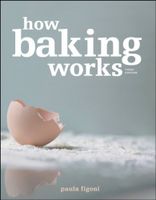Advertisement
Reducing Agents
Appears in
By Paula Figoni
Published 2003
Reducing agents have the opposite effect of maturing agents that strengthen. While maturing agents like ascorbic acid oxidize gluten-forming proteins, allowing them to form more bonds that hold gluten together more strongly, reducing agents alter (“reduce”) gluten-forming proteins so that they form fewer bonds and hold together more weakly. The most common reducing agent used by large-scale commercial bakeries is L-cysteine. L-cysteine is an amino acid found in proteins throughout nature. It is a common ingredient in dough conditioners. L-cysteine and other reducing agents are sometimes added to dough in large-scale commercial operations so that the dough mixes faster and more easily and generates less frictional heat. The softening and slackening effect of the reducing agent is later counteracted with maturing agents like potassium bromate, which help rebuild gluten structure during proofing and baking, when structure is needed most.

